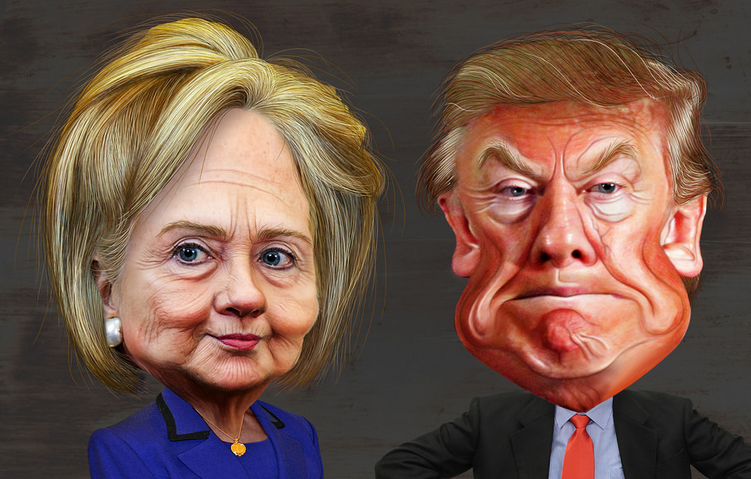The United States presidential election in November will be historic in many ways, but the long-term implications of either Hillary Clinton or Donald Trump winning will likely have less of an impact than many market participants are anticipating. If history is any guide, election results have had a relatively minimal impact on longer-term U.S. or global equity returns, according to Bloomberg data and the BlackRock Investment Institute. It also hasn’t seemed to matter much whether the president belongs to the Republican or Democratic Party.
Instead, factors such as inflation, interest rates and global growth are much more important to markets. And while these areas are a focal point for Federal Reserve (Fed) policy, they remain largely outside of presidential control, except to the extent that the president nominates (and the Senate approves) the Fed chairman and governors.
Nevertheless, we do expect some short-term market volatility leading up to the election and will keep an eye on certain sectors — health care, financials and infrastructure, for example — which thus far have been hot topics for the candidates. Since real policy changes wouldn’t likely occur until 2017 (and beyond), this short-term volatility may create more attractive entry points in select areas that appear attractive.
The potential for higher volatility comes against a backdrop of an unusually quiet month for U.S. stocks. We expect volatility to pick up from these extremely low levels and the election rhetoric may just be the trigger.
Careful with health care and financials
Although volatility is likely to persist across the broad market, specific sectors may be particularly vulnerable, or conversely, offer some opportunity. Among those to be cautious on is health care. The sector has historically underperformed in election years (source: Bloomberg), due in large part to concerns over pricing pressure on the biotech and pharmaceuticals subsectors. The latest headlines over EpiPen pricing have renewed this focus and brought with it increased volatility.
Over the short term, we don’t believe that the election and a new president will have a big impact on health care stocks’ fundamentals. Given the two candidates’ opposing views on health care, however, there could well be longer-term implications on policy changes. But remember that implementing any real, significant changes to the health care system will need to pass through Congress and will likely take years, not months. That said, volatility and fundamentals aren’t always aligned and a selloff triggered by regulation rhetoric may create selective buying opportunities in the near term.
Financials could also be impacted in a similar fashion. Again, meaningful regulations could take time, but campaign rhetoric may increase volatility. The path of the Fed’s rate hike policy will likely have a bigger effect on the sector’s fundamentals. While we can expect one more interest rate hike this year given Fed Chairwoman Janet Yellen’s most recent comments at Jackson Hole, financials may benefit from widening net interest margins (the spread between what banks make on loans and what they pay for deposits.)
More attention on infrastructure
So where can investors find potential opportunities? Perhaps infrastructure spending, a rare area of agreement between the two candidates (although they disagree on how to fund such spending). As the campaign debate continues to discuss job creation and economic growth, there has been a renewed investor focus on infrastructure spending and transportation. Additionally, Fed Governor John C. Williams of San Francisco recently published a paper suggesting a shifting focus from monetary policy to fiscal policy and an emphasis on economic growth and a higher inflation target. This likely bodes well for the sector. But keep in mind: There could be significant delay from a proposal of greater infrastructure spending to passage of a bill and actual disbursement of money.
Some strategies to consider
While this election season is likely to be filled with surprises, investors may also want to consider strategies that aim to minimize equity market volatility and potentially provide downside protection. Or take a look at quality companies, characterized by high profitability, steady earnings and low leverage, which have typically outperformed when market volatility rises, according to a paper by Richard Sloan.
Investors interested in health care and financials may want to consider the iShares U.S. Healthcare ETF (IYH) and the iShares U.S. Financials ETF (IYF). To gain access to infrastructure, consider the iShares Global Infrastructure ETF (IGF), the iShares Transportation Average ETF (IYT) or the iShares U.S. Industrials ETF (IYJ). For minimum volatility and quality, take a look at the iShares EDGE MSCI Min Vol USA ETF (USMV) or the iShares Edge MSCI USA Quality Factor ETF (QUAL).
Build on Insight, by BlackRock written by Heidi Richardson
Carefully consider the Funds’ investment objectives, risk factors, and charges and expenses before investing. This and other information can be found in the Funds’ prospectuses or, if available, the summary prospectuses which may be obtained by visiting www.iShares.com or www.blackrock.com. Read the prospectus carefully before investing.
Investing involves risk, including possible loss of principal.
This material is not intended to be relied upon as a forecast, research or investment advice, and is not a recommendation, offer or solicitation to buy or sell any securities or to adopt any investment strategy. The opinions expressed are as of the date indicated and may change as subsequent conditions vary. The information and opinions contained in this post are derived from proprietary and nonproprietary sources deemed by BlackRock to be reliable, are not necessarily all-inclusive and are not guaranteed as to accuracy. As such, no warranty of accuracy or reliability is given and no responsibility arising in any other way for errors and omissions (including responsibility to any person by reason of negligence) is accepted by BlackRock, its officers, employees or agents. This post may contain “forward-looking” information that is not purely historical in nature. Such information may include, among other things, projections and forecasts. There is no guarantee that any of these views will come to pass. Reliance upon information in this post is at the sole discretion of the reader.
International investing involves risks, including risks related to foreign currency, limited liquidity, less government regulation and the possibility of substantial volatility due to adverse political, economic or other developments. These risks often are heightened for investments in emerging/developing markets and in concentrations of single countries.
Funds that concentrate investments in specific industries, sectors, markets or asset classes may underperform or be more volatile than other industries, sectors, markets or asset classes than the general securities market.
There can be no assurance that performance will be enhanced or risk will be reduced for funds that seek to provide exposure to certain quantitative investment characteristics (“factors”).Exposure to such investment factors may detract from performance in some market environments, perhaps for extended periods. In such circumstances, a fund may seek to maintain exposure to the targeted investment factors and not adjust to target different factors, which could result in losses.
The iShares Minimum Volatility ETFs may experience more than minimum volatility as there is no guarantee that the underlying index’s strategy of seeking to lower volatility will be successful.
The Funds are distributed by BlackRock Investments, LLC (together with its affiliates, “BlackRock”).
The iShares Funds are not sponsored, endorsed, issued, sold or promoted by MSCI Inc., nor does this company make any representation regarding the advisability of investing in the Funds. BlackRock is not affiliated with MSCI Inc.
©2016 BlackRock, Inc. All rights reserved. iSHARES and BLACKROCK are registered trademarks of BlackRock, Inc., or its subsidiaries. All other marks are the property of their respective owners.


